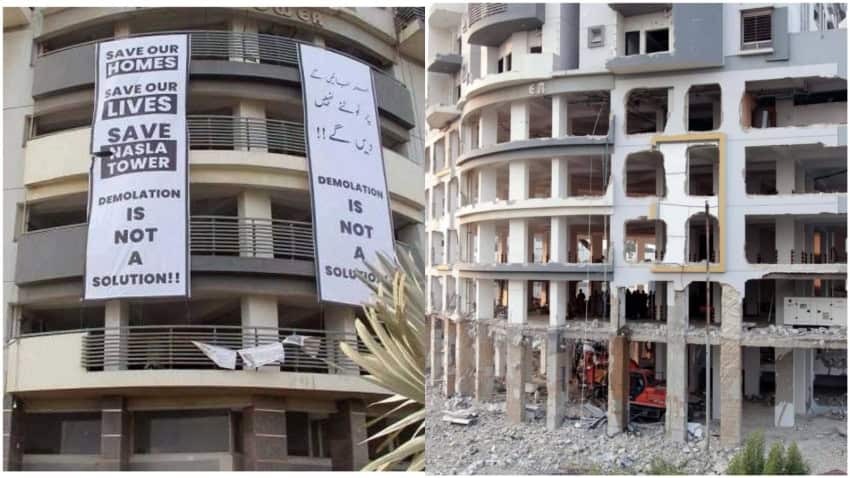In a significant development, the Supreme Court, under the leadership of Chief Justice of Pakistan (CJP) Qazi Faez Isa, has issued a decisive ruling regarding the Nasla Tower case.
The court’s verdict, delivered on Thursday, encompasses two critical directives aimed at addressing the aftermath of the tower’s demolition and restoring public access to roads obstructed by security barricades.
Compensation for Nasla Tower Affectees
Under the first directive, the court has ordered the sale of Nasla Tower’s land with the intention of compensating individuals adversely affected by the building’s demolition.
The top court had previously directed the builders to refund the affectees of the residential and commercial units within three months, following the demolition order. Despite this, the counsel representing the Nasla Tower affectees informed the court that the builder of the residential complex had passed away, leaving his clients in limbo. In response, the court directed the affectees to approach the official assignee with the relevant ownership documents.
Directing the authorities to submit a report on the market value of Nasla Tower land, the court further ordered the publication of an advertisement for the sale of the land, followed by the submission of a report on the auction bid as well. Additionally, the court has sought a detailed report on the plot adjacent to the now-demolished Nasla Tower, along with the details of the builder’s heirs.
Issuing notice to the Sindhi Muslim Cooperative Society, the court adjourned the hearing and granted one month for the relevant authorities to submit their response in the said case.
Road Blockades Declared Illegal
Simultaneously, the Supreme Court has taken a firm stance against the proliferation of road blockades outside key buildings, including the Sindh Rangers headquarters, Chief Minister’s House, and Governor’s House. Chief Justice Isa emphasized the fundamental right of citizens to unimpeded movement, condemning the placement of barriers as illegal and obstructive.
During the hearing, CJP Isa highlighted the encroachment epidemic, calling upon federal and provincial authorities to address land seizures perpetrated by governmental entities themselves. The court’s directive mandates the clearance of encroachments and the recovery of expenses associated with this effort from the encroachers.
Addressing concerns raised about security measures, CJP Isa challenged the validity of road blockades, questioning their effectiveness in ensuring public safety while impeding citizens’ rights. He urged authorities to relocate security measures away from public thoroughfares and emphasized the need to prioritize public access.
With this ruling, the Supreme Court reaffirms its commitment to upholding justice and safeguarding citizens’ rights. By addressing systemic challenges in land management and public security, the court’s verdict marks a significant step towards accountability and resolution in the Nasla Tower case.













